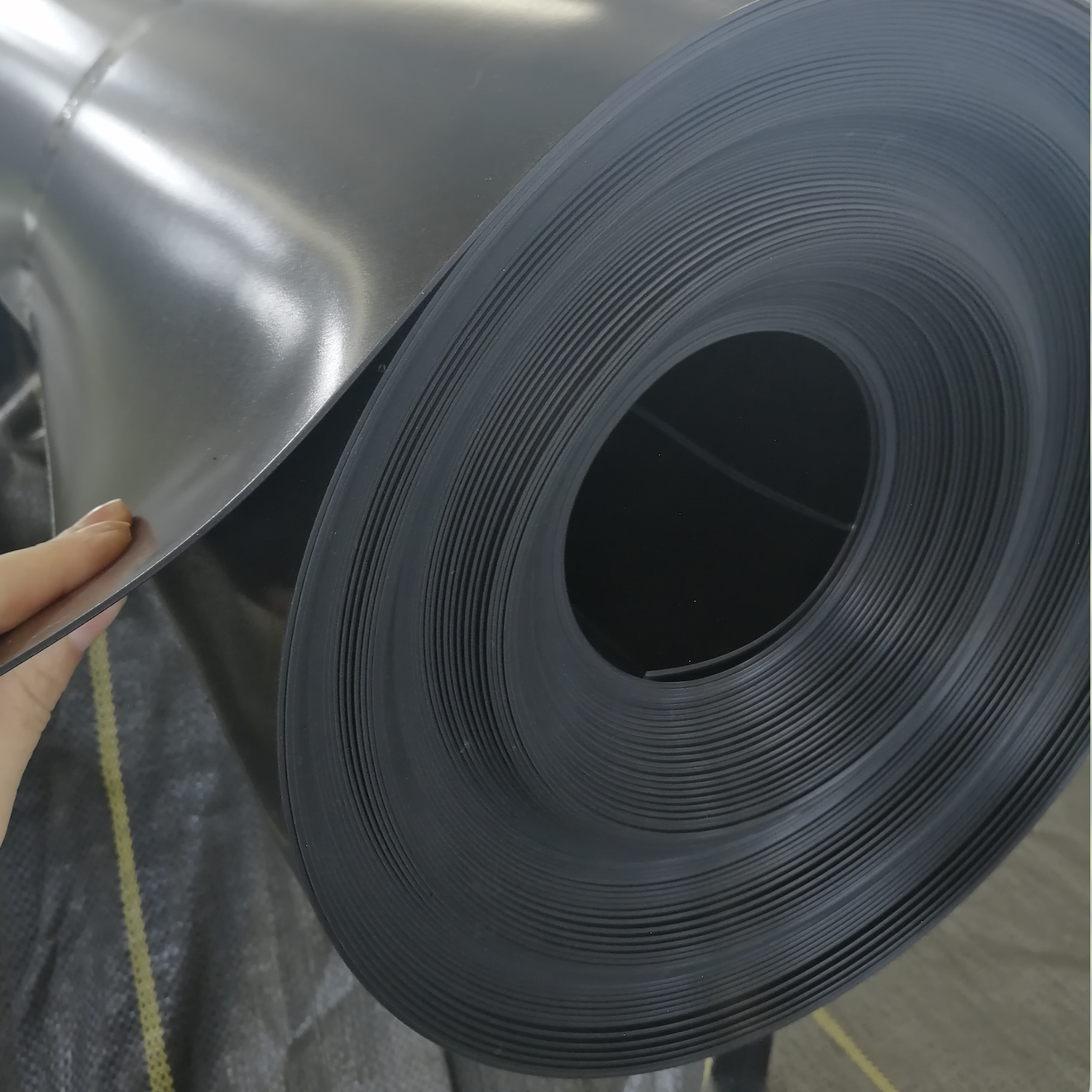
-
 Español
Español
-
 Portugues
Portugues
-
 Pусский
Pусский
-
 Français
Français
-
 Deutsch
Deutsch
-
 日本語
日本語
-
 한국어
한국어
-
 العربية
العربية
-
 Italiano
Italiano
-
 Nederlands
Nederlands
-
 Ελληνικά
Ελληνικά
-
 Svenska
Svenska
-
 Polski
Polski
-
 ไทย
ไทย
-
 Türk dili
Türk dili
-
 हिन्दी
हिन्दी
-
 Indonesia
Indonesia
-
 Melayu
Melayu
-
 Tiếng Việt
Tiếng Việt
-
 中文
中文
-
 dansk
dansk
-
 Magyar
Magyar
-
 қазақ
қазақ
-
 বাংলা
বাংলা
-
 עִברִית
עִברִית
-
 čeština
čeština
-
 Soomaali
Soomaali
-
 မြန်မာ
မြန်မာ
-
 فارسی
فارسی
-
 українська
українська
-
 norsk
norsk
-
 Gaeilge
Gaeilge
-
 беларускі
беларускі
-
 Română
Română
-
 ພາສາລາວ
ພາສາລາວ
-
 Filipino
Filipino
-
 lietuvių
lietuvių
-
 Cymraeg
Cymraeg
-
 македонски
македонски
-
 Suomalainen
Suomalainen
-
 slovenský
slovenský
-
 o'zbek
o'zbek
-
 اردو
اردو
-
 հայերեն
հայերեն
-
 Igbo
Igbo
-
 български
български
-
 سنڌي
سنڌي
-
 Shona
Shona
-
 සිංහල
සිංහල
-
 Hrvatski
Hrvatski
-
 íslenskur
íslenskur
-
 galego
galego
-
 català
català
-
 Zulu South Africa
Zulu South Africa
-
 Afrikaans isiXhosa
Afrikaans isiXhosa
-
 ಕನ್ನಡ
ಕನ್ನಡ
-
 lëtzebuergesch
lëtzebuergesch
-
 Indonésia Sunda
Indonésia Sunda
-
 basa jawa
basa jawa
-
 ગુજરાતી
ગુજરાતી
-
 Кыргызча
Кыргызча
-
 тоҷикӣ
тоҷикӣ
-
 Србија
Србија
-
 Twi
Twi
-
 Hawaii
Hawaii
-
 Cebu
Cebu
-
 नेपाल
नेपाल
-
 euskara
euskara
-
 Kurdî
Kurdî
-
 frissi
frissi
-
 יידיש
יידיש
-
 latvija
latvija
-
 slovenija
slovenija
-
 kiswahili
kiswahili
-
 ਪੰਜਾਬ
ਪੰਜਾਬ
-
 پښتو
پښتو
-
 საქართველოს
საქართველოს
-
 hua moni
hua moni
-
 bosna
bosna
-
 తెలుగు
తెలుగు
-
 தமிழ்
தமிழ்
-
 Kreyòl ayisyen
Kreyòl ayisyen
-
 Eesti
Eesti
-
 Corsica
Corsica
-
 Yoruba
Yoruba
-
 Gàidhlig na h-Alba
Gàidhlig na h-Alba
-
 Samoa
Samoa
-
 Монгол
Монгол
-
 Hausa
Hausa
-
 Azərbaycan
Azərbaycan
-
 አማራ
አማራ
-
 Shqipëria
Shqipëria
-
 Malagasy
Malagasy
-
 मराठी
मराठी
-
 മലയാളം
മലയാളം
-
 Malta
Malta
-
 ខ្មែរ
ខ្មែរ
-
 Chicheva
Chicheva
-
 中文(繁体)
中文(繁体)
-
 ଓଡିଆ
ଓଡିଆ
-
 Setswana
Setswana
-
 Afrikaans
Afrikaans
-
 Aymara
Aymara
-
 Башҡорт
Башҡорт
-
 Türkmenler
Türkmenler
-
 ትግሪኛ
ትግሪኛ
-
 Afaan Oromoo
Afaan Oromoo
-
 অসমীয়া
অসমীয়া
-
 Kinyarwanda
Kinyarwanda
-
 Ilocano
Ilocano
-
 Wolof
Wolof
-
 अवधी
अवधी
-
 Oluganda
Oluganda
-
 Bikol
Bikol
-
 Fulɓe
Fulɓe
-
 Kikongo
Kikongo
-
 Sango
Sango
-
 ދިވެހި
ދިވެހި
-
 Lingala
Lingala
-
 मैथिली
मैथिली
-
 Tsonga
Tsonga
-
 ꯃꯦꯏ ꯊꯥꯏ꯫
ꯃꯦꯏ ꯊꯥꯏ꯫
-
 brezhoneg
brezhoneg
-
 Furlan
Furlan
-
 नेवा
नेवा
-
 རྫོང་ཁ
རྫོང་ཁ
-
 Santali
Santali
-
 Аҧсуа
Аҧсуа
-
 Нохчийн
Нохчийн
-
 Чӑваш
Чӑваш
-
 Татар
Татар
-
 Batak Karo
Batak Karo
-
 دری
دری
-
 Diura
Diura
-
 Fengyu
Fengyu
-
 Eʋegbe
Eʋegbe
-
 Iban
Iban
-
 Fiji
Fiji
-
 Tonga
Tonga
-
 Inuktitut
Inuktitut
-
 Nahuatl
Nahuatl
-
 maaya yucatec
maaya yucatec
-
 Runasimi
Runasimi
-
 guarani
guarani
-
 Qafar
Qafar
-
 Acholi
Acholi
-
 Dinka
Dinka
-
 Luo
Luo
-
 Lundi
Lundi
-
 isiNdebele
isiNdebele
-
 Tshivenḓa
Tshivenḓa
-
 Sesotho sa Leboa
Sesotho sa Leboa
-
 Sesotho sa Borwa
Sesotho sa Borwa
-
 Ndumbe
Ndumbe
-
 Papuan Pidgin
Papuan Pidgin
-
 Rromani ćhib
Rromani ćhib
-
 Thok Nath
Thok Nath
yuxiatugong@163.com
+86 18353494641
-
 Español
Español
-
 Portugues
Portugues
-
 Pусский
Pусский
-
 Français
Français
-
 Deutsch
Deutsch
-
 日本語
日本語
-
 한국어
한국어
-
 العربية
العربية
-
 Italiano
Italiano
-
 Nederlands
Nederlands
-
 Ελληνικά
Ελληνικά
-
 Svenska
Svenska
-
 Polski
Polski
-
 ไทย
ไทย
-
 Türk dili
Türk dili
-
 हिन्दी
हिन्दी
-
 Indonesia
Indonesia
-
 Melayu
Melayu
-
 Tiếng Việt
Tiếng Việt
-
 中文
中文
-
 dansk
dansk
-
 Magyar
Magyar
-
 қазақ
қазақ
-
 বাংলা
বাংলা
-
 עִברִית
עִברִית
-
 čeština
čeština
-
 Soomaali
Soomaali
-
 မြန်မာ
မြန်မာ
-
 فارسی
فارسی
-
 українська
українська
-
 norsk
norsk
-
 Gaeilge
Gaeilge
-
 беларускі
беларускі
-
 Română
Română
-
 ພາສາລາວ
ພາສາລາວ
-
 Filipino
Filipino
-
 lietuvių
lietuvių
-
 Cymraeg
Cymraeg
-
 македонски
македонски
-
 Suomalainen
Suomalainen
-
 slovenský
slovenský
-
 o'zbek
o'zbek
-
 اردو
اردو
-
 հայերեն
հայերեն
-
 Igbo
Igbo
-
 български
български
-
 سنڌي
سنڌي
-
 Shona
Shona
-
 සිංහල
සිංහල
-
 Hrvatski
Hrvatski
-
 íslenskur
íslenskur
-
 galego
galego
-
 català
català
-
 Zulu South Africa
Zulu South Africa
-
 Afrikaans isiXhosa
Afrikaans isiXhosa
-
 ಕನ್ನಡ
ಕನ್ನಡ
-
 lëtzebuergesch
lëtzebuergesch
-
 Indonésia Sunda
Indonésia Sunda
-
 basa jawa
basa jawa
-
 ગુજરાતી
ગુજરાતી
-
 Кыргызча
Кыргызча
-
 тоҷикӣ
тоҷикӣ
-
 Србија
Србија
-
 Twi
Twi
-
 Hawaii
Hawaii
-
 Cebu
Cebu
-
 नेपाल
नेपाल
-
 euskara
euskara
-
 Kurdî
Kurdî
-
 frissi
frissi
-
 יידיש
יידיש
-
 latvija
latvija
-
 slovenija
slovenija
-
 kiswahili
kiswahili
-
 ਪੰਜਾਬ
ਪੰਜਾਬ
-
 پښتو
پښتو
-
 საქართველოს
საქართველოს
-
 hua moni
hua moni
-
 bosna
bosna
-
 తెలుగు
తెలుగు
-
 தமிழ்
தமிழ்
-
 Kreyòl ayisyen
Kreyòl ayisyen
-
 Eesti
Eesti
-
 Corsica
Corsica
-
 Yoruba
Yoruba
-
 Gàidhlig na h-Alba
Gàidhlig na h-Alba
-
 Samoa
Samoa
-
 Монгол
Монгол
-
 Hausa
Hausa
-
 Azərbaycan
Azərbaycan
-
 አማራ
አማራ
-
 Shqipëria
Shqipëria
-
 Malagasy
Malagasy
-
 मराठी
मराठी
-
 മലയാളം
മലയാളം
-
 Malta
Malta
-
 ខ្មែរ
ខ្មែរ
-
 Chicheva
Chicheva
-
 中文(繁体)
中文(繁体)
-
 ଓଡିଆ
ଓଡିଆ
-
 Setswana
Setswana
-
 Afrikaans
Afrikaans
-
 Aymara
Aymara
-
 Башҡорт
Башҡорт
-
 Türkmenler
Türkmenler
-
 ትግሪኛ
ትግሪኛ
-
 Afaan Oromoo
Afaan Oromoo
-
 অসমীয়া
অসমীয়া
-
 Kinyarwanda
Kinyarwanda
-
 Ilocano
Ilocano
-
 Wolof
Wolof
-
 अवधी
अवधी
-
 Oluganda
Oluganda
-
 Bikol
Bikol
-
 Fulɓe
Fulɓe
-
 Kikongo
Kikongo
-
 Sango
Sango
-
 ދިވެހި
ދިވެހި
-
 Lingala
Lingala
-
 मैथिली
मैथिली
-
 Tsonga
Tsonga
-
 ꯃꯦꯏ ꯊꯥꯏ꯫
ꯃꯦꯏ ꯊꯥꯏ꯫
-
 brezhoneg
brezhoneg
-
 Furlan
Furlan
-
 नेवा
नेवा
-
 རྫོང་ཁ
རྫོང་ཁ
-
 Santali
Santali
-
 Аҧсуа
Аҧсуа
-
 Нохчийн
Нохчийн
-
 Чӑваш
Чӑваш
-
 Татар
Татар
-
 Batak Karo
Batak Karo
-
 دری
دری
-
 Diura
Diura
-
 Fengyu
Fengyu
-
 Eʋegbe
Eʋegbe
-
 Iban
Iban
-
 Fiji
Fiji
-
 Tonga
Tonga
-
 Inuktitut
Inuktitut
-
 Nahuatl
Nahuatl
-
 maaya yucatec
maaya yucatec
-
 Runasimi
Runasimi
-
 guarani
guarani
-
 Qafar
Qafar
-
 Acholi
Acholi
-
 Dinka
Dinka
-
 Luo
Luo
-
 Lundi
Lundi
-
 isiNdebele
isiNdebele
-
 Tshivenḓa
Tshivenḓa
-
 Sesotho sa Leboa
Sesotho sa Leboa
-
 Sesotho sa Borwa
Sesotho sa Borwa
-
 Ndumbe
Ndumbe
-
 Papuan Pidgin
Papuan Pidgin
-
 Rromani ćhib
Rromani ćhib
-
 Thok Nath
Thok Nath

News Center
News Center
HOT PRODUCT
Swimming Pool Waterproof Sheet Membrane for Tile and Plaster
2025-10-12 08:09:31

Swimming Pool Waterproof Sheet Membrane for Tile and Plaster: A Comprehensive Guide
Introduction
Swimming pools are complex structures that require meticulous waterproofing to ensure durability, safety, and longevity. One of the most critical components in pool construction is the waterproof sheet membrane, which acts as a barrier against water penetration, preventing leaks and structural damage. This guide explores the importance of waterproof membranes for tiled and plastered swimming pools, their types, installation methods, and best practices for ensuring a watertight and long-lasting pool structure.
1. Importance of Waterproofing in Swimming Pools
Waterproofing is essential in swimming pools for several reasons:
- Prevents Water Leakage: Without proper waterproofing, water can seep into the pool’s structure, leading to cracks, corrosion, and structural failure.
- Protects Against Chemical Damage: Pool water contains chlorine and other chemicals that can degrade concrete and plaster over time. A waterproof membrane acts as a protective layer.
- Prevents Mold and Algae Growth: Moisture penetration can lead to mold and algae growth, which is unsightly and can pose health risks.
- Enhances Durability: A well-installed waterproof membrane extends the lifespan of the pool by preventing water-induced deterioration.
2. Types of Waterproof Sheet Membranes for Swimming Pools
Several types of waterproof membranes are used in swimming pool construction, each with unique properties and applications.
2.1. Liquid-Applied Membranes
Liquid membranes are applied as a coating that cures to form a seamless, flexible waterproof barrier. Common types include:
- Polyurethane-Based Membranes: Highly flexible and resistant to chemicals, making them ideal for pools.
- Acrylic-Based Membranes: Easier to apply but less durable than polyurethane.
- Epoxy Coatings: Provide excellent adhesion and chemical resistance but are less flexible.
2.2. Sheet Membranes
Sheet membranes are pre-fabricated waterproof layers that are adhered to the pool’s surface. They include:
- PVC (Polyvinyl Chloride) Membranes: Durable, flexible, and resistant to chemicals. Often used in commercial pools.
- EPDM (Ethylene Propylene Diene Monomer) Membranes: Highly elastic and UV-resistant, suitable for outdoor pools.
- TPO (Thermoplastic Polyolefin) Membranes: Lightweight and resistant to punctures, commonly used in modern pool construction.
2.3. Cementitious Waterproofing
Cement-based waterproofing is applied as a slurry and forms a rigid, water-resistant layer. While effective, it lacks flexibility and is often used in combination with other membranes.
3. Choosing the Right Waterproof Membrane for Tiled and Plastered Pools
The choice of waterproof membrane depends on factors such as pool design, climate, and budget.
3.1. For Tiled Pools
- Flexibility: Tiles can crack due to movement, so a flexible membrane (e.g., PVC or liquid polyurethane) is recommended.
- Adhesion: The membrane must bond well with both the substrate and tile adhesive.
- Chemical Resistance: Must withstand pool chemicals to prevent degradation.
3.2. For Plastered Pools
- Seamless Application: Liquid membranes are ideal as they form a continuous layer without joints.
- Compatibility with Plaster: The membrane should not react with plaster materials.
- Durability: Must resist abrasion from pool cleaning and maintenance.
4. Installation Process of Waterproof Sheet Membranes
Proper installation is crucial for the effectiveness of the waterproof membrane. Below is a step-by-step guide:
4.1. Surface Preparation
- Clean the substrate to remove dust, grease, and loose particles.
- Repair cracks and uneven surfaces with appropriate fillers.
- Ensure the surface is dry before applying the membrane.
4.2. Priming (If Required)
- Some membranes require a primer to enhance adhesion.
- Apply the primer evenly and allow it to dry as per manufacturer instructions.
4.3. Applying the Membrane
- For Sheet Membranes:
- Unroll the membrane and cut to fit the pool’s dimensions.
- Apply adhesive and press the membrane firmly onto the substrate.
- Seal seams with waterproof tape or welding (for PVC membranes).
- For Liquid Membranes:
- Apply using a roller, brush, or spray equipment.
- Ensure even thickness and multiple coats if necessary.
4.4. Curing and Testing
- Allow the membrane to cure fully before proceeding with tiling or plastering.
- Conduct a water test to check for leaks by filling the pool and monitoring for water loss.
5. Common Mistakes and How to Avoid Them
- Improper Surface Preparation: Skipping cleaning or repairs can lead to poor adhesion. Always ensure a clean, smooth surface.
- Incorrect Membrane Selection: Using a non-flexible membrane for tiled pools can cause cracks. Choose a product suited for the application.
- Poor Seam Sealing: In sheet membranes, improperly sealed joints can leak. Use recommended sealing techniques.
- Inadequate Curing Time: Rushing the curing process can weaken the membrane. Follow manufacturer guidelines.
6. Maintenance and Longevity of Waterproof Membranes
To maximize the lifespan of a waterproof membrane:
- Regular Inspections: Check for cracks, blisters, or signs of wear.
- Prompt Repairs: Address minor damages before they escalate.
- Avoid Harsh Cleaning Methods: Use soft brushes and non-abrasive cleaners to prevent membrane damage.
7. Conclusion
A high-quality waterproof sheet membrane is essential for the structural integrity and longevity of swimming pools, whether tiled or plastered. By selecting the right membrane, following proper installation techniques, and maintaining the waterproofing system, pool owners can ensure a leak-free and durable swimming environment. Investing in professional-grade waterproofing solutions will save costs in the long run by preventing costly repairs and extending the pool’s lifespan.
This guide provides a comprehensive overview of swimming pool waterproofing, helping contractors and homeowners make informed decisions for their pool projects.








 Phone
Phone
Comment
(0)